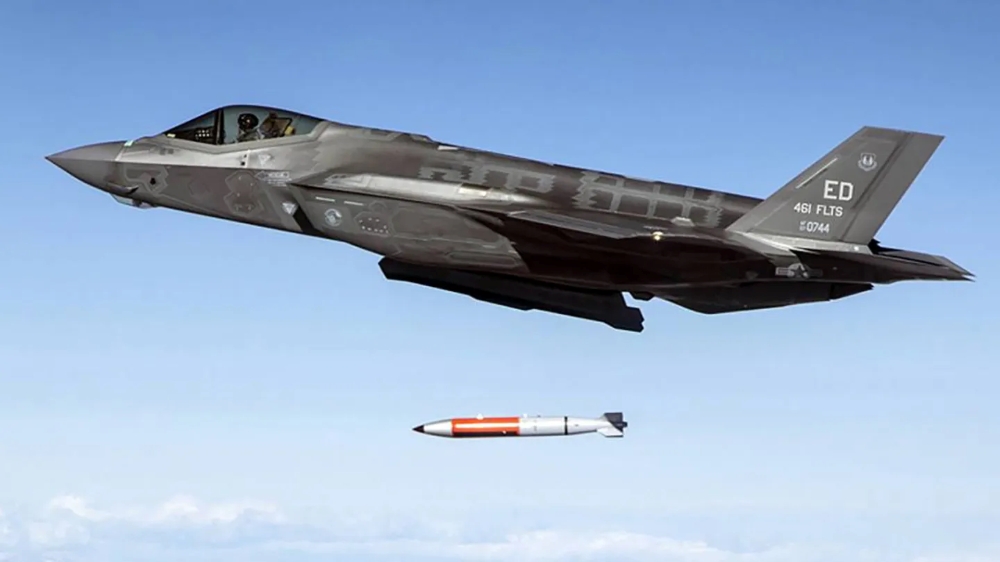
On December 18, 2024, the US Department of Energy’s National Nuclear Security Administration (NNSA) completed the Last Production Unit (LPU) of the B61-12 Life Extension Program (LEP).
The LEP project was initiated in 2008 to addresses multiple components that were nearing their end-of-life point, in addition to military requirements for reliability, service life, field maintenance, safety, and use control. The B61-12 nuclear bomb underwent a comprehensive life extension program that encompassed the refurbishment of both its nuclear and non-nuclear components.
This process prioritized the reuse of existing parts whenever feasible. The modernized B61-12 incorporates a new tail kit assembly, developed by the Air Force, which significantly enhances the weapon's accuracy. This upgraded version is designed to replace four earlier variants of the B61 bomb currently in service: the B61-3, B61-4, B61-7, and B61-10. The consolidation of these models into a single, more advanced weapon system streamlines the nuclear arsenal while maintaining its effectiveness.
The B61 family of bombs has over 50 years of service, making it the oldest and most versatile weapon in the enduring U.S. nuclear weapon stockpile. Nearly 3000 were built since 1963 in 15 different versions, which over the years consolidated into 5 types (-3, -4, -7, -10 and -11). By 2014 the number across all types had reduced to 825.
In terms of characteristics, the B61 is a family of tactical gravity fall thermonuclear bombs fitted with warheads with adjustable explosive yield. The B61-3 can be set from 0.3 to 170 kilotons; the -4 from 0.3 to 50; the -7 from 10 to 360; the -10 from 0.3 to 80.
The B61-11, which entered service in 1997, is a unique member of the family which presents very significant outer body differences as it is meant as a specialized, deep-penetrating anti-bunker weapon to take out the most reinforced of targets. Its heavy, reinforced body and rocket accelerator are complemented by a warhead which is believed to have a yield of between that could be set as high as 400 kilotons.
Until around 2018 it was expected the B61-12 would de facto replace also the B61-11 which would be allowed to “life out” without a dedicate replacement. It was believed that the B61-12, thanks to the much greater accuracy on target made possible by its new Tail Kit Assembly (TKA) which includes an inertial navigation system (INS) guidance package, would be able to deliver sufficient anti-bunker residual capability despite being based on the warhead of the -4, with a maximum yield of just 50 kilotons. The B61-12 TKA is believed to reduce Circular Error Probable to less than 30 meters from 100 to 170 with a legacy B61.
The worsening of the international scenario is leading to substantial rethinks, however, and a more specific B61-11 replacement might be on the cards in the near future. In the meanwhile, in 2023, the US Administration has already kick-started a new project, instigated by Congress, to produce a “small” number of B61-13, a new Mod which will leverage the current, established production capabilities supporting the B61-12 but with a warhead type leveraging the capabilities of the Mod-7, so with a maximum yield of 300-360 kilotons.
A majority in Congress felt it was unwise to reduce not only the number of warheads but their destructive power, consolidating on the lowest yield for the entire stock. The NNSA confirms in its press release that, hot on the conclusion of the B61-12 LEP, it will now “transition to producing the B61-13 bomb, which will leverage the current, established production capabilities supporting the B61-12. FPU of the B61-13 is scheduled for FY 2026”.
In the meanwhile, the B61-12 LEP released an Aircraft Compatibility Control Document documenting compatibility certification with the F 15E, B-2A, F-35A, F 16, and PA-200 (Panavia TORNADO IDS for Italy and Germany) and is continuing certification activities for the B-21.
The B61-12 is a particularly important weapon because it enables the NATO Nuclear Sharing arrangement, in which warheads stored in bases in Europe are available for carriage on allied aircraft, including initially the mentioned TORNADO IDS in Italy and Germany. The TORNADO IDS will be entirely replaced in the nuclear mission by F-35A over the coming years, first in Italy and then also in Germany.
In 2014 there were 180 B61s in Europe for the Nuclear Sharing arrangement, believed to be distributed as follows: 20 at Kleine Brogel in Belgium (for Belgian F-16, then F-35A); 20 at Buchel in Germany (Tornado IDS, then F-35A); 50 at Aviano (for US F-16s based there) and 20 at Ghedi, both in Italy (the Ghedi ones for Italian Tornado IDS, F-35A in future); 20 at Volkel in the Netherlands (dutch F-16, then F-35A) and 50 at Incirlik in Turkey for both Turkish and US F-16s.
Total cost of the B61-12 LEP from 2009 to 2026, when full closure will happen, is estimated at circa 9.5 billion USD (in FY 2023 dollars).








.png)
